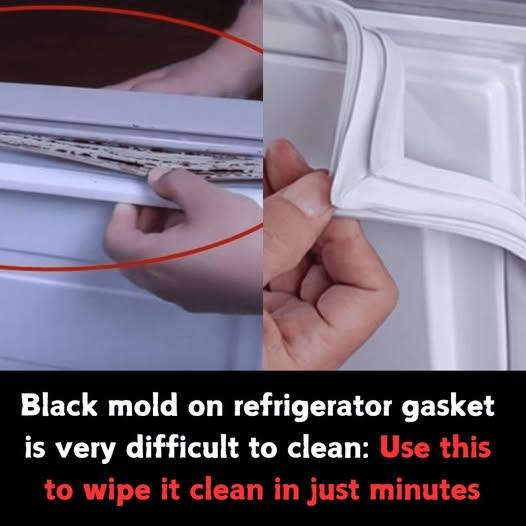ADVERTISEMENT
#### Step-by-Step Guide to Cleaning Black Mold from Refrigerator Gaskets
1. **Unplug the Refrigerator and Empty It Out**
Safety first: always unplug the refrigerator before cleaning, especially if you are using any liquids. Empty the fridge of any food to avoid contamination or mess. If there’s a lot of food inside, consider transferring it to a cooler to maintain its freshness.
2. **Inspect the Gasket**
Carefully inspect the refrigerator gasket for any visible mold or mildew. Pay attention to areas where the gasket meets the fridge and the door, as this is where moisture tends to build up the most.
3. **Clean with a Baking Soda Paste**
– Mix a paste using baking soda and water (about 1 tablespoon of baking soda with 1 cup of water).
– Apply the paste to the moldy areas of the gasket using a microfiber cloth or your fingers (wear gloves if you prefer).
– Gently scrub the affected areas with a soft-bristled brush. The abrasive nature of the baking soda helps lift the mold without damaging the rubber gasket.
– Once you’ve scrubbed away the mold, wipe away the paste using a clean, damp cloth.
4. **Apply White Vinegar**
White vinegar is a natural mold killer and is safe to use on the rubber gasket. After cleaning the gasket with the baking soda paste:
– Spray undiluted white vinegar directly onto the moldy spots.
– Let the vinegar sit for about 10-15 minutes. You may notice the vinegar bubbling as it interacts with the mold.
– Wipe off the vinegar with a clean cloth or sponge. The vinegar will disinfect and help prevent mold regrowth.
5. **Hydrogen Peroxide for Stubborn Mold**
If any mold remains after the vinegar treatment, hydrogen peroxide can be an effective next step:
– Pour 3% hydrogen peroxide into a spray bottle and spray it onto the moldy areas.
– Let the solution sit for 10-15 minutes.
– Scrub again with your brush, focusing on any tough spots.
– Wipe away the excess hydrogen peroxide with a cloth.
6. **Dry the Gasket Thoroughly**
Mold thrives in moist environments, so it’s essential to dry the gasket completely after cleaning. Use a dry cloth to wipe off any remaining moisture. Make sure the gasket is completely dry to prevent future mold growth.
7. **Check the Seal**
Once cleaned, check the refrigerator door’s seal. Close the door and observe if the gasket is fully sealing the fridge. If you notice any gaps or tears, it might be time to replace the gasket. A faulty gasket can lead to more mold buildup, reduced cooling efficiency, and higher energy consumption.
#### How to Prevent Mold from Returning
Once you’ve cleaned the mold, prevention is key to avoiding future infestations. Here are some tips:
1. **Keep the Gasket Dry**
Regularly wipe down the gasket and surrounding area to keep moisture at bay. If you notice condensation, dry it immediately with a cloth.
2. **Improve Door Seal**
Ensure that the refrigerator door closes completely every time. If the gasket appears worn or damaged, replace it to ensure a tight seal.
3. **Maintain Your Fridge’s Humidity**
Avoid placing hot or warm food directly into the fridge, as this increases condensation and moisture. Keep the fridge at the right temperature (around 37-40°F or 3-4°C) to reduce humidity.
4. **Use a Dehumidifier**
If your kitchen is prone to high humidity, using a dehumidifier can help reduce moisture in the air and prevent mold growth inside your fridge.
5. **Regular Cleaning**
Clean the gasket every month as part of your regular refrigerator maintenance. A quick wipe down can prevent mold from forming.
#### Conclusion
While cleaning black mold from a refrigerator gasket is a tedious task, it’s important to do so to maintain your fridge’s efficiency and keep your kitchen mold-free. By following these simple cleaning methods and taking steps to prevent future mold growth, you can ensure that your refrigerator stays clean, functional, and safe for storing food. Regular maintenance will go a long way in keeping your appliance in top shape and extending its lifespan.
ADVERTISEMENT
